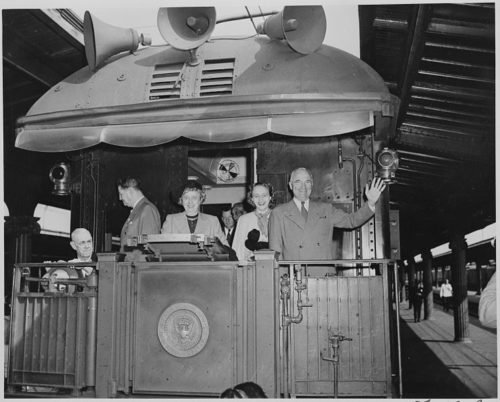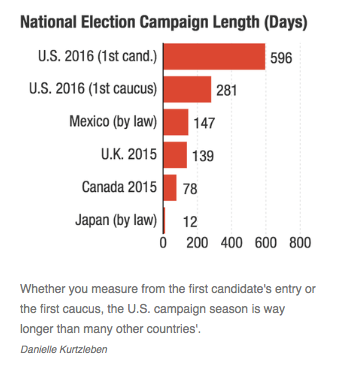We’ve all seen it — on the front pages, in our online newsfeeds; big screens and small, pocket-sized screens especially. The 2016 election cycle, which has lasted for more than 600 days, is taking a toll on Americans. The history of rousing speeches and whistlestop tours and true outreach to working-class communities across the nation is just that; history.
We used to have promises, and they were either kept or broken. What we have had this year is more like a deluge — a deluge of fear, hate and incompetence that (put into context) can quite literally make raise your blood pressure, while potentially putting you in a verbal battlefield with frenemies across social media in arguments that last days, if not weeks.
That it’s hit such a fever pitch is in part due to the advent of social media, but also another interesting stat:
600+ days of campaigning from the candidates.
How long are campaigns supposed to last?
Sometimes it seems as if politicians never stop campaigning. But back in the olden days, in the mid-19th century, elected officials had just barely started getting their influence at national party conventions. They were held in the summers of an election year, versus the “back-room wrangling at national party conventions,” according to a New York Times report tracking the phenomenon. Fast forward to 1960, and John F. Kennedy’s race lasted just short of a year, clocking in at 11 months.

Wikimedia Commons
It has only recently become a marathon lasting for more than two years, with reporters covering every step of an elected official’s presidential bid from its early whispers all the way to the last leg of the race.
What can be done about it?
A Change.org petition started by Grammy-winning artist Sheryl Crow wants to limit the ordeal to a shorter time period, taking a page from other countries. In Canada, elections last about 11 weeks, and most of the time Canadians are already over it by the time of its finale. Laws in other countries have have limited campaign seasons to as short as 6 weeks.

Source: NPR
It would take a public push at this point to shorten the length, and that’s due all of the big money that’s made amongst the media and political professionals.
Putting the two-year slugfest into context
This election, Sen. Ted Cruz of Texas became the first entrant in the race way back on March 22, 2015 — almost a month before Hillary Clinton, who kicked things off on April 12, 2015.
Although Cruz exited the race ahead of his primary opponent Donald Trump (who entered June 16, 2015), it created a media vortex of campaign coverage that would last for more than 600 days — a statistic previously, we never could have imagined. To put the campaign’s earliness into context, in April 2015, the Chicago Cubs were coming off a losing season in which they finished 17 games out.
Now they’re in the World Series.
Editor’s Note: Election Day is right around the corner in less than two weeks, on Nov. 8
